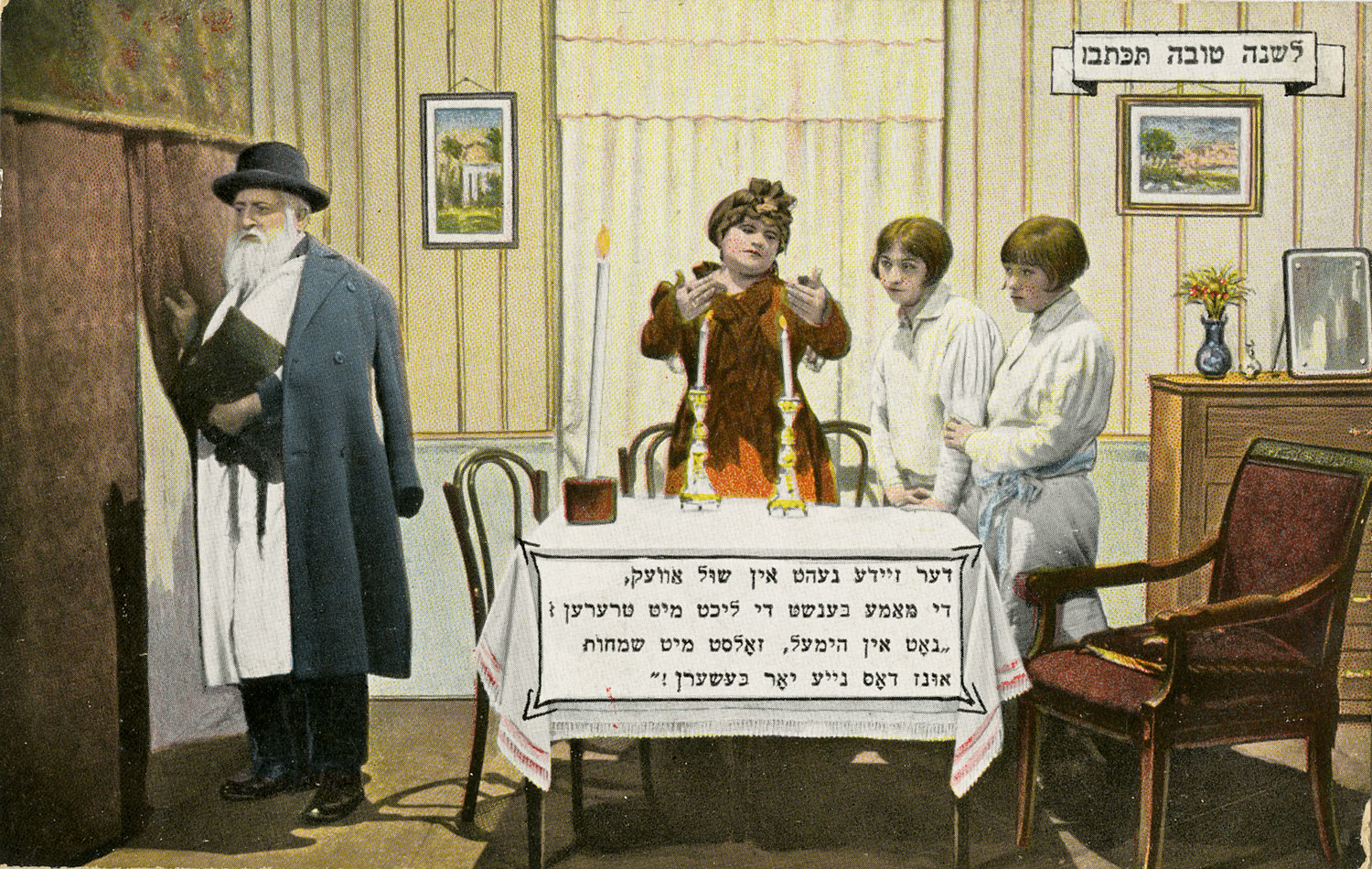In this postcard for Rosh Hashanah (the Jewish New Year), one can readily see the distinction between male and female synagogue participation. The first line of the Yiddish poem reads: “Der zayde geht in shul avek” or “Grandfather has gone to shul.” As the elderly man exits the home on his way to participate in services at the synagogue, it is quite clear that the mother and two daughters are not going with him.
In traditional Jewish practice, many of a man’s religious responsibilities revolve around the synagogue, while a woman’s obligations are first and foremost focused on fulfilling religious commandments in the home. One of her primary responsibilities is lighting the candles to mark the beginning of the Jewish Sabbath or a holiday, including Passover, Shavuot, Sukkot, Rosh Hashanah, and Yom Kippur. This postcard shows the women fulfilling the commandment of lighting candles. After lighting the candles, the woman waves her hands towards her face three times, symbolically welcoming the Sabbath, characterized in feminine language, as either a “bride” or “queen.” She recites the words: “Blessed are You, Lord our God, Ruler of the Universe, who has sanctified us with commandments, and commanded us to light Shabbat [or festival] candles.” With the lighting of candles, the Sabbath or holiday officially commences.
